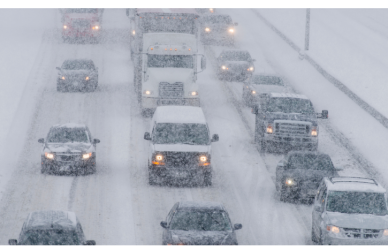Concerns over fuel prices have been rising as global supply levels dip into significantly low levels. The Energy Information Administration (EIA) recently announced that U.S. distillate levels have not been this low since 2008, when the country faced a recession. This announcement comes alongside the reality that diesel prices have just bumped over $5 per gallon, as reported by Commercial Carrier Journal.
When the currently low distillate supply is placed in comparison to the low levels of 2008, there are some important differences. In 2008, supply levels were low as the country headed into the summer of the year, following a spring of high demand; now, the country heads into winter with higher demands of distillates such as diesel and heating oil. October 1982 was the last time U.S. distillate levels have been as low as they are now.
While there are many concerns in the United States with the state of distillates, and in turn diesel, a widespread outage of diesel is unlikely, according to Tiffany Wlazlowski Neuman, the vice president of public affairs at NATSO, a trade association that represents U.S. travel centers and truck stops.
“Diesel supply is tight and diesel inventories are low,” she said. “This is a structural problem, but the market is adjusting to get product where it needs to be as efficiently as possible. Absent a disrupting event, the current period of vulnerable stability can continue.”
This is supported by Tina Arundel, the senior director of communications for Travel Centers of America. She said that there is no notable concern in any of her company’s 288 locations across 44 states and is “not certain why anyone would be out of product.”
Hearing that experts feel an outage is unlikely does not mean that the fuel system itself isn’t experiencing a mild crisis.
“There is no shortage but the supply and logistics system is strained,” said Tom Kloza, global head of energy analysis at Oil Price Information Service (OPIS).
If you’re in the market for diesel, it is unlikely that you’re going to experience a lack of fuel. You may, however, experience more of your budget going toward fuel. As of Oct. 31, the national average per gallon for diesel was $5.31, according to the EIA. Zach Wall, senior vice president of sales and marketing for fuel supply and logistics provider at Mansfield Energy, said that buyers should plan for increased prices if they’re to obtain fuel.
“Short answer is there’s very little slack in the supply chain,” he said, “so the shortage could cause intermittent runouts to allow time for consumers to go to Plan B if/when something falls through, and potential cost overruns associated with securing product through extraordinary means. But if buyers have the fortitude for higher prices, they’ll likely be able to secure product as necessary.”
Decreased supply levels could not only increase price tags for fuel, but also leave consumers unprotected from unpredicted increases in demand or decreases in supply.
“For example, if a major refinery shuts down for a period of time, or it gets unseasonably cold in the northeast,” Wlazlowski Neuman said, “the cause for concern could increase.”











